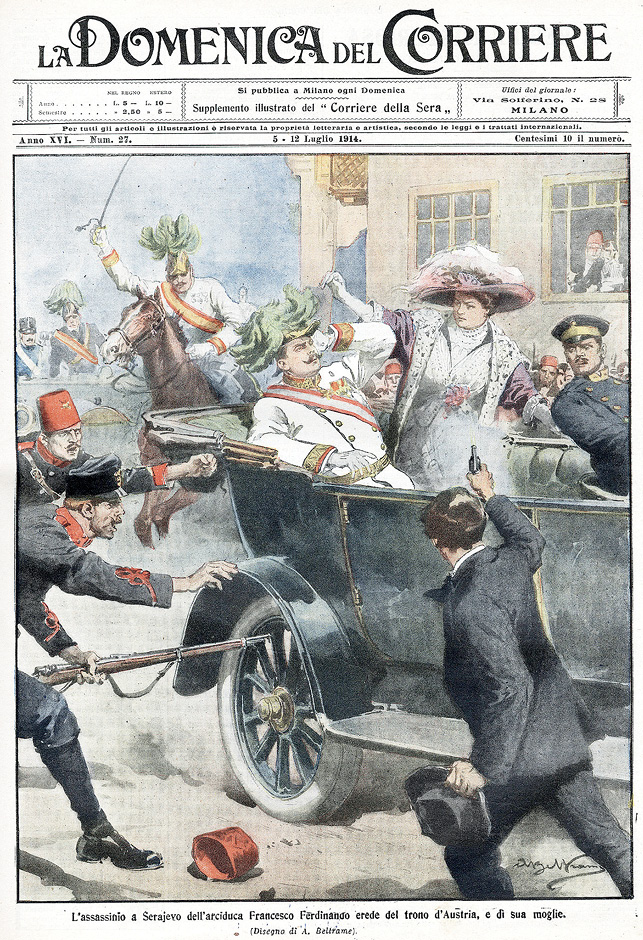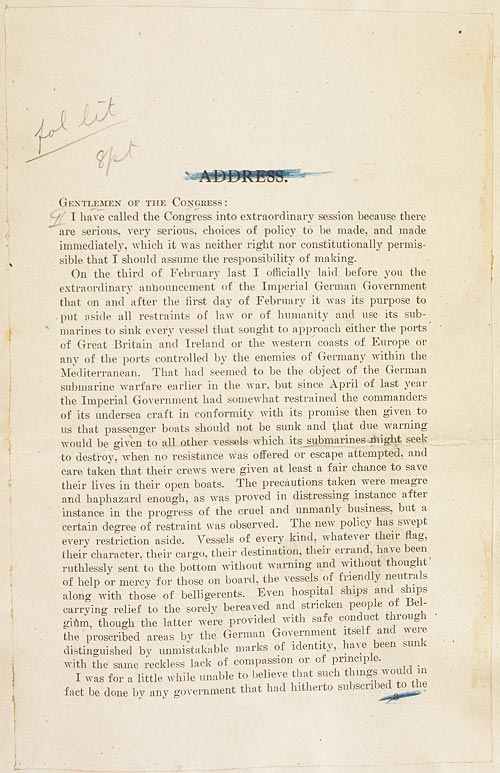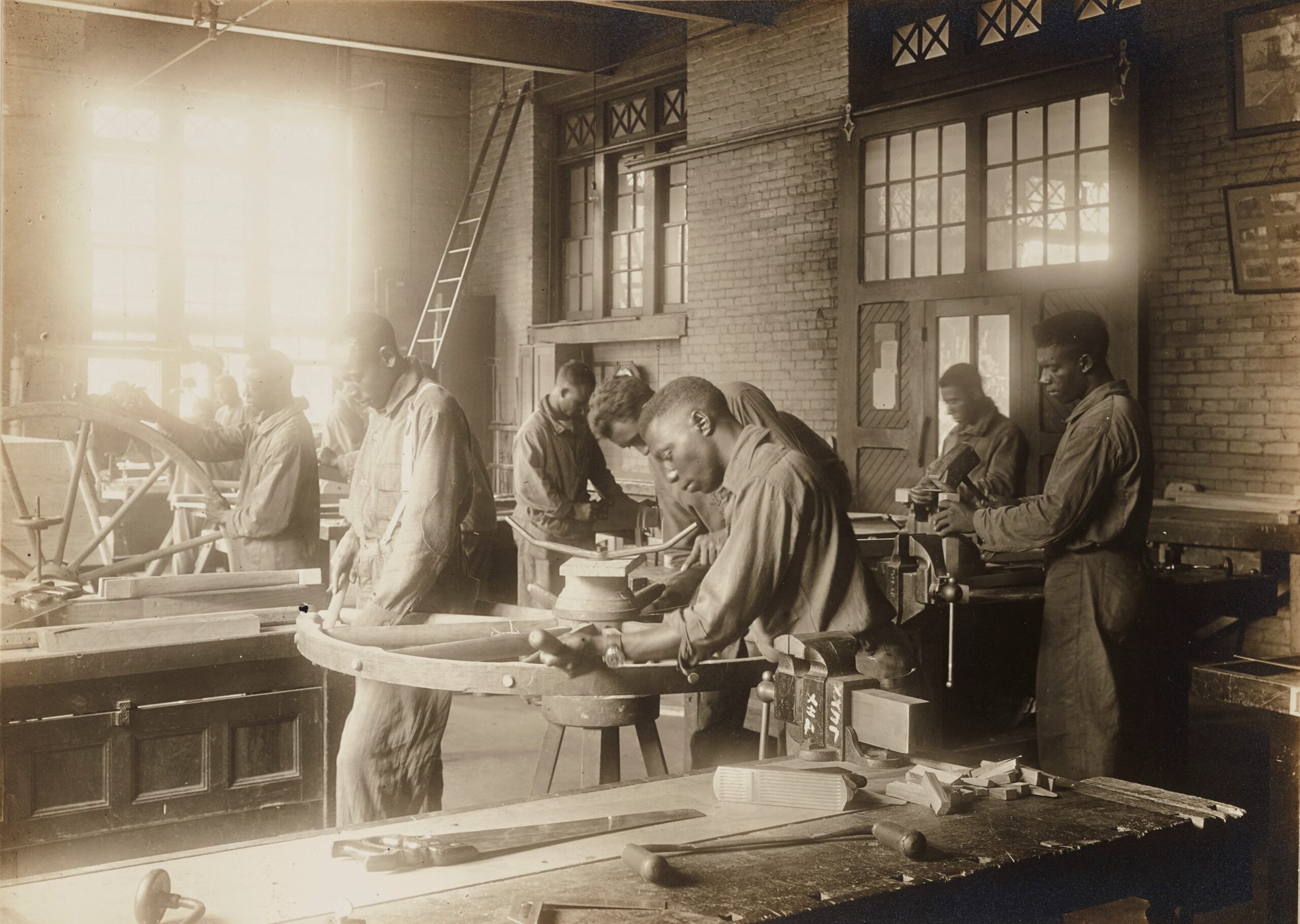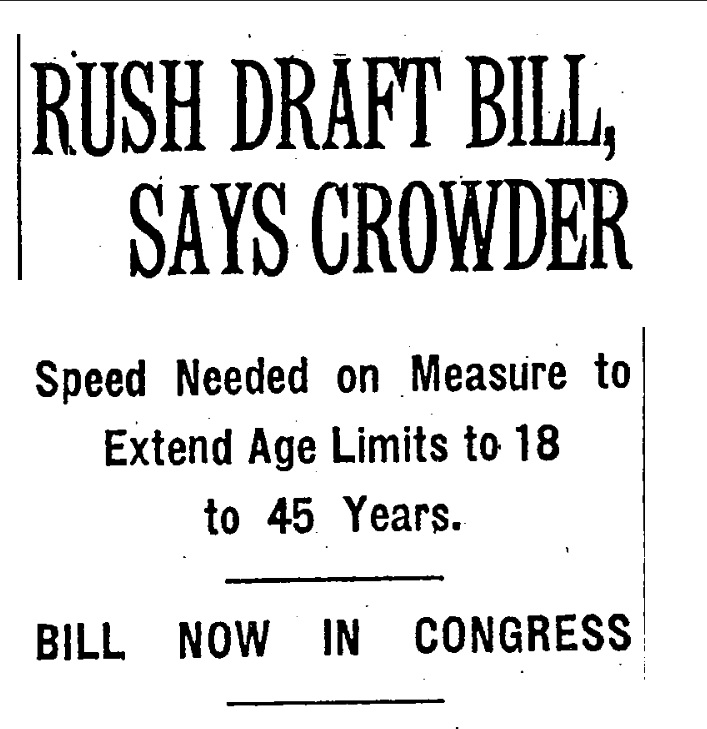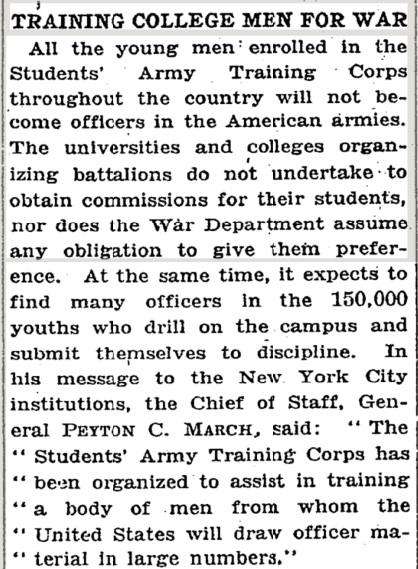The CEST alters its plans for the SATC
The War Department’s request forces the CEST to alter their plans for the SATC in three major areas. First, instead of enlisting, students would volunteer to join the SATC and would be placed on active duty, preventing them from being transferred before completing their training. Second, members of the SATC who were between the ages of eighteen and twenty would spend different amounts of time in the program, so that they would stay on track with when they would have been drafted. Twenty-year-old members would stay in the program for three months, nineteen-year-old members for six months, and eighteen-year-old members for nine months. Third, the National Training Detachments would be folded into the SATC as the B Section, while the officer training portion of the program would be referred to as the A Section. Schools could have either A Sections, B Sections, or both.8
